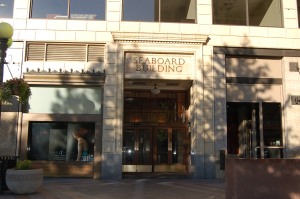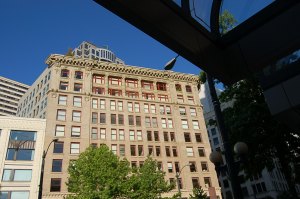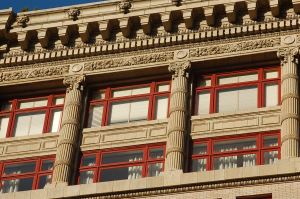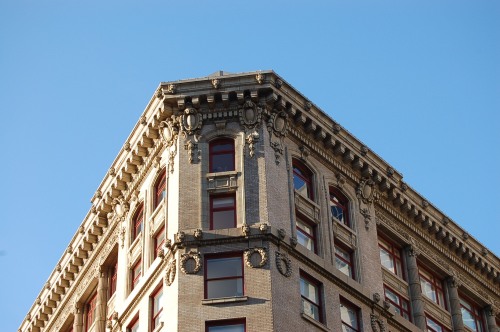 I chose this building to blog mostly because it has the same architect as the Eitel Building. I guess you could call this one “when good buildings go condo.”
I chose this building to blog mostly because it has the same architect as the Eitel Building. I guess you could call this one “when good buildings go condo.”
I had hoped to have some history of the building, but there is little online, except for the notes in the Eitel Building post that they have the same architect. Most of the information online is about the recent conversion to condos. I did find this picture from 1916 of the building.
According to Emporis.com, the building finished construction in 1910. I think it was used as offices for most of its lifetime. I did find one mention that a Swedish newspaper was housed there in the 1930’s.
The Seattle Times has a story here about one of the condos in the conversion. I guess most of them have  14’4″ ceilings. I’m glad I don’t live there. Heat rises, folks, and I worry about heating in the winter. But I guess these people can
14’4″ ceilings. I’m glad I don’t live there. Heat rises, folks, and I worry about heating in the winter. But I guess these people can
probably afford the heating.
If you want to see the whole building, there are
pictures referenced above. Me, I just like to look at parts of buildings. For instance, I really like the decorations on building that are of this age. I think they are a lot more interesting than the concrete and glass boxes we have for architecture today. And I don’t think a lot of them will be around 100 years from now. One of the interesting things about the picture to the left is the tree growing out of the top of the building. I assume this is the penthouse, and has a nice yard. I wish my building had a nice yard on top. But it doesn’t.
I guess I still resent the fact that a lot of historic building are being renovated into condos, and upscale condos at that. I suppose if you are going to renovate a building that is historic, you have to do that to get your money out of the project. I just wish there was a way to do the renovations and still serve the ordinary people, and the low income people.




